- This event has passed.
TYC Highlight Seminar: Calculations of excited electronic states by converging on saddle points on the electronic energy surface
Prof. Hannes Jonsson, University of Iceland
15 May 2025 @ 3:00 pm – 5:00 pm
Followed by a reception in UCL Physics E7

Calculations of excited electronic states are important in various contexts such as light harvesting, photocatalysis and molecular motors. They are challenging as commonly used optimization algorithms are based on minimization and converge on the ground state. As a result, a time-dependent formulation of density functional theory (DFT) is frequently used, TD-DFT, especially within the linear response and adiabatic approximations. This approximate approach, however, has several limitations especially when significant charge transfer occurs during the excitation and when states are close in energy. Within configuration interaction (CI) theory, it is evident that excited states correspond to saddle points on the electronic energy surface, with the saddle point order increasing with the excitation level. While CI calculations can be accelerated greatly by using neural networks [1], they are much too computationally demanding for most systems of interest. DFT is used in most electronic structure calculations carried out today, and by using an algorithm for converging on saddle points on the electronic energy surface, the orbitals can be optimised for excited states to provide higher energy solutions to the underlying Kohn-Sham equations [2,3]. This gives more robust estimates of the excitation energy than TD-DFT with computational effort similar to that of ground state calculations.
Several applications of this approach with commonly used density functionals will be presented, as well as calculations using a self-interaction corrected functional that gives improved results. In particular, various excited states of the ethylene molecule, including twisting of the C=C double bond, the active element of various molecular motors, and high energy Rydberg states, have been analysed [4]. In a solid state application, the various states relevant for the optical preparation of a pure spin state in nitrogen/vacancy defect in diamond, a system used in various types of quantum technologies, have been calculated. The results show close agreement with computationally demanding, high-level calculations as well as experiments [5].
[1] Y.L.A. Schmerwitz et al. 19, 3634 (2025).
[2] G. Levi, A.V. Ivanov and H. Jónsson, J. Chem. Theo. Comput. 16, 6968 (2020).
[3] Y.L.A. Schmerwitz, G. Levi and H. Jónsson, J. Chem. Theory and Comput. 19, 3634 (2023).
[4] A.E. Sigurdarson, Y.L.A. Schmerwitz, D.K.V. Tveiten, G. Levi and H. Jónsson, J. Chem. Phys. 159, 214109 (2023).
[5] A.V. Ivanov, Y.L.A. Schmerwitz, G. Levi and H. Jónsson, SciPost Physics 15, 009 (2023).
